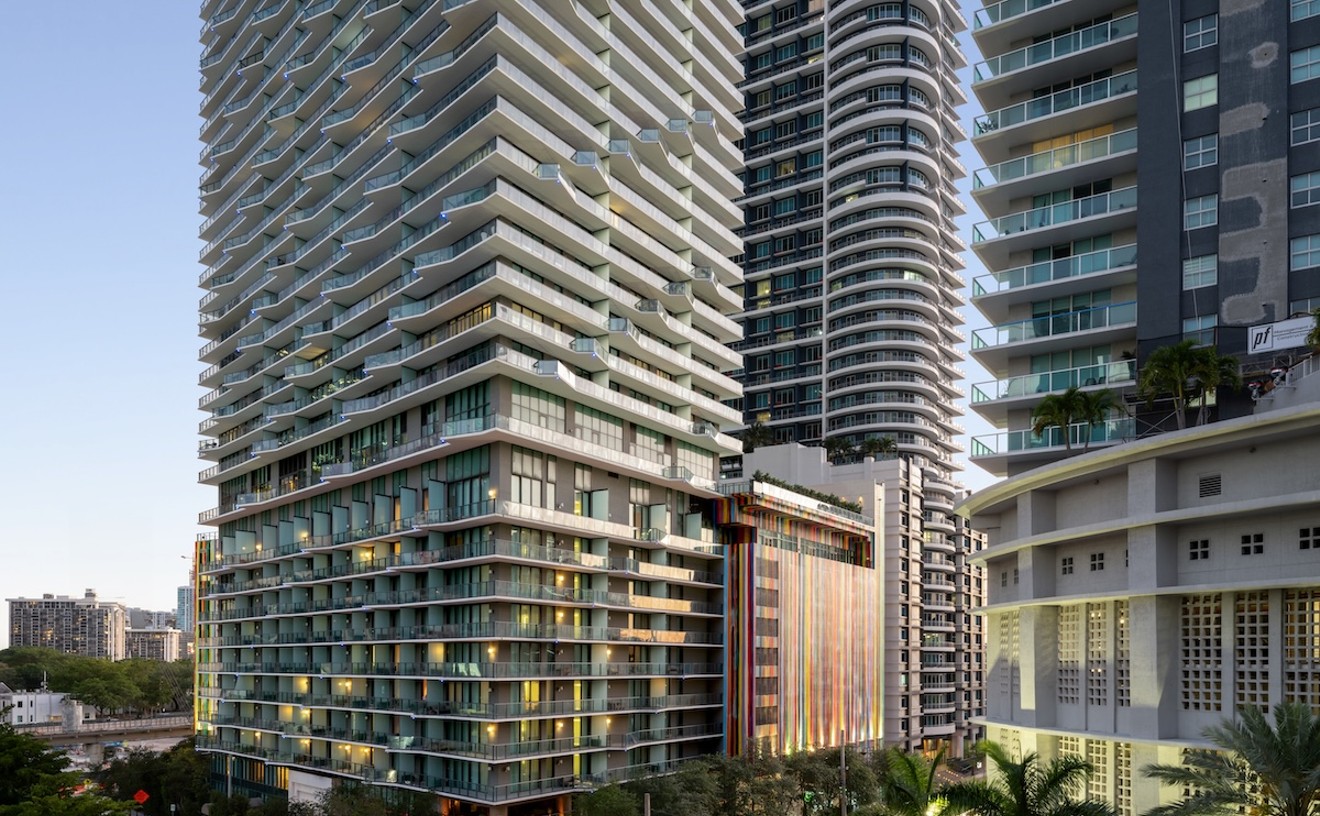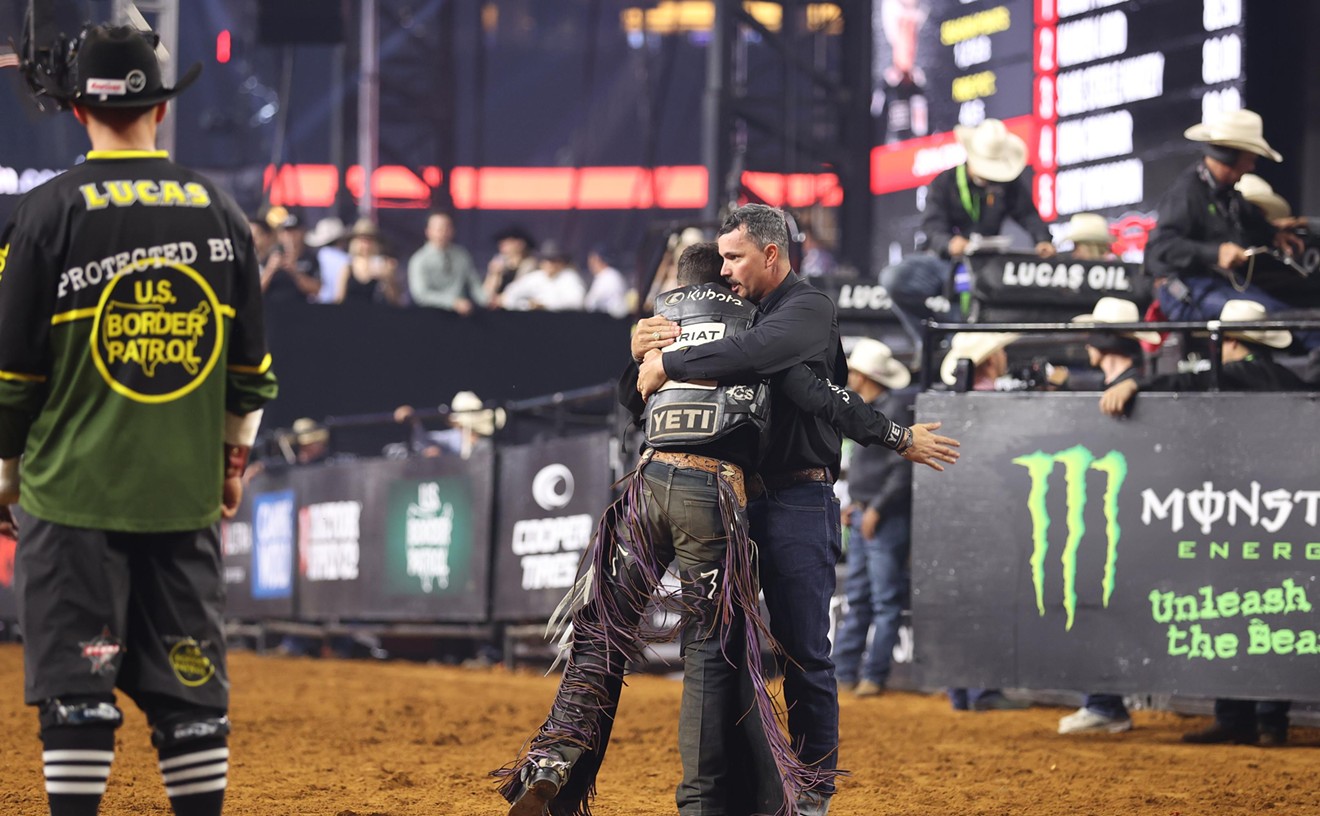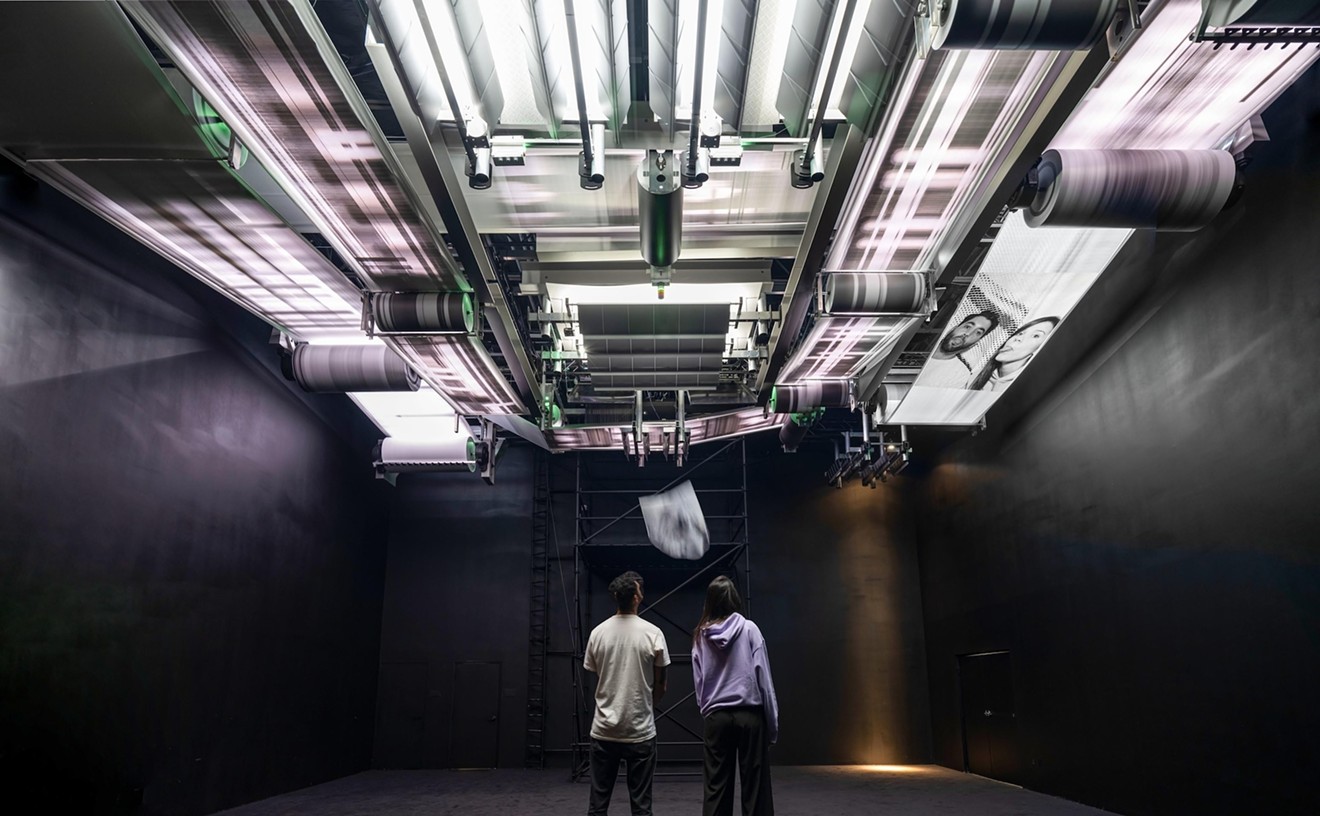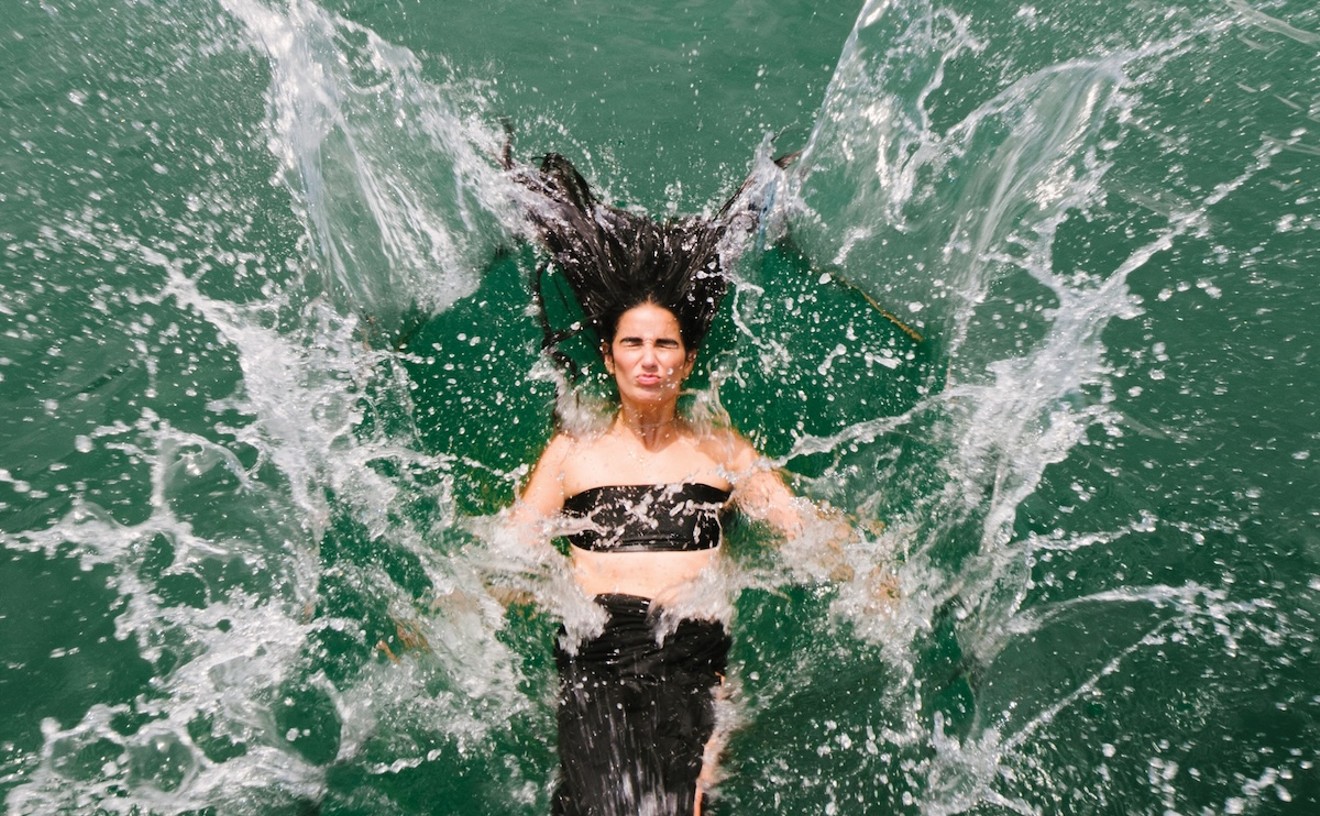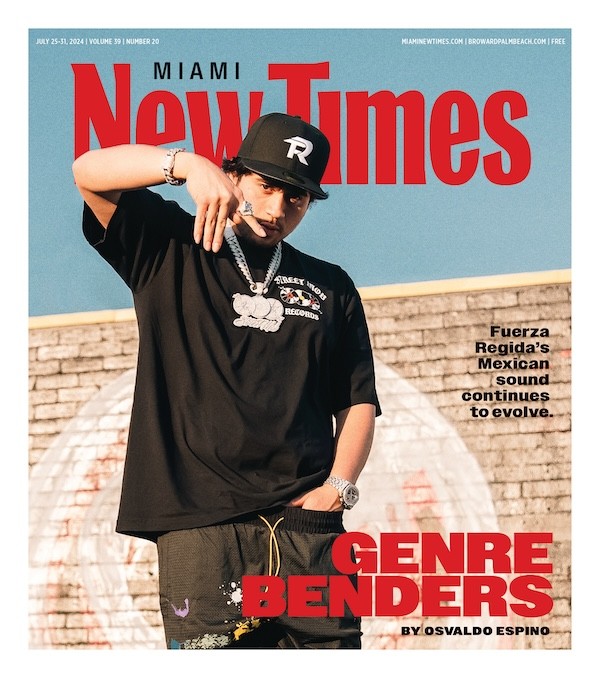Carlos Martiel is a living, breathing work of art. The 25-year-old has sewn a business suit onto his body. He's cloaked himself in burlap covered by wet potter's clay and then allowed the public to beat him with police batons. He has also had himself blinded by tear gas and laid naked in a gallery while covered by a gallon of blood. He has even pinned a handful of his father's military service medals to his bare chest.
"Conceptually, I am unlike other performance artists, who often rely on objects or repeated action in their works," the controversial Cuban-American says. "Instead, I become the object, transforming my body into a work of art."
Martiel's work is part of a program of ten artists called "Fleeting Imaginaries" at CIFO Art Space. The exhibit, which also includes video, multimedia projects, and sculpture, opens to the public this Friday at 6 p.m.
The artist you will most want to watch is Martiel, who stands more than six feet tall and has the muscular body of a prizefighter. He was born in Havana, where he became aware of his creative talents at a very young age. "I believe an artist is born knowing what they are," Martiel observes. "Since I became self-aware, I always felt an obsession to draw, paint, and sing. But officially, I began my career as an artist as a teenager, when I was 14."
When he was growing up, his mother worked odd jobs while his father was a cop and then a soldier in Cuba's military, where he earned several medals for patriotic merit and "internationalist efforts and service in Angola," the artist says. Martiel studied art for several years and then started experimenting with performance art in 2007, at age 18, when he began making a series of drawings with his own blood.
And although he refrains from talking directly about the political and social problems back home, where his father remains, he says his earlier works reflect the tensions in Cuba today. For example, for the 2011 performance piece Four Walls, Martiel had himself gassed with a can of mace on a busy Old Havana street while a crowd of unsuspecting bystanders surrounded him. Tears and mucus cover his face as he stumbles into the walls of buildings and houses.
Martiel says that on the island, police employ insane methods of crowd control. "They don't just use tear gas to break up riots. They will often spray it on people at a theater waiting in line to see a movie, for example, to make sure things don't become unruly."
Soon after, Martiel offered his body as the scene of a crime in a performance titled Lastre, which essentially translates to "dead weight." He covered his body in clay, and onlookers beat him with batons as a comment on police oppression in his homeland. "Afterward, I spent 24 hours going about my average daily business," he says. "Beneath the cloth, I bore the bruises and other fingerprints left by the brutality inflicted on me."
Cuban authorities nevertheless allowed him to travel to Great Britain for the sixth Liverpool Biennial, where he sutured an expensive, classically tailored British suit to his body. "I stitched the suit to my sleeves and ankles before the public during a 45-minute performance," he says. "It hurt at first, but after five or so stitches, the pain faded." The purpose of the piece was to comment on the difference between "proper" and "alien."
But once he returned home from Europe, he decided to leave Cuba for Argentina. He lived there for a year before moving to Chicago. For a project this summer, Martiel evoked Chicago's history as both a mecca for immigrants and a center for slaughterhouses by covering himself in immigrant-donated blood. "The constantly changing flow of migration marks individual identity," he says. "Despite such a large population of immigrants in Chicago, everyone seemed to cling to their own particular, almost sectioned-off neighborhoods."
This past winter, Martiel opted for his own sweat over donated blood in a Montreal project called Acid Rain, in which he perched himself naked 12 feet above a gallery floor while surrounded with six space heaters. "My sweat gathered on the floor below," he explains.
For his current project at CIFO, Martiel visited Mayoral Dermatology in Coral Gables, where a team of surgeons removed a hockey-puck-size section of skin from his left hip. "The skin is being dehydrated by a professional art conservator to be placed within a gold medal I designed similar to the ones the Cuban government bestows on privileged citizens for patriotic merit," he explains.
After the wound healed, Martiel had a tattoo placed around the scar with the technical details of the artwork as a historical register of his personal sacrifice and to question what it means to be a black man in contemporary Cuban society.
A video documenting the artist's surgical procedure, a photo of the tattoo, and the skin medal will be displayed at CIFO. "The medal is also an object that symbolizes the lives of millions of people across the planet who have been marginalized or disenfranchised by racial prejudice."
Despite the calculated risks he often takes, Martiel says the challenge of creating provocative art is not always without danger. "There are moments while I'm working where things get out of control and seem to slip out of my hands," he says. "My work is born from so much injustice, discrimination, repression, abuse of power, uprootedness, and personal migratory experiences. It offers a critique on all of this."






